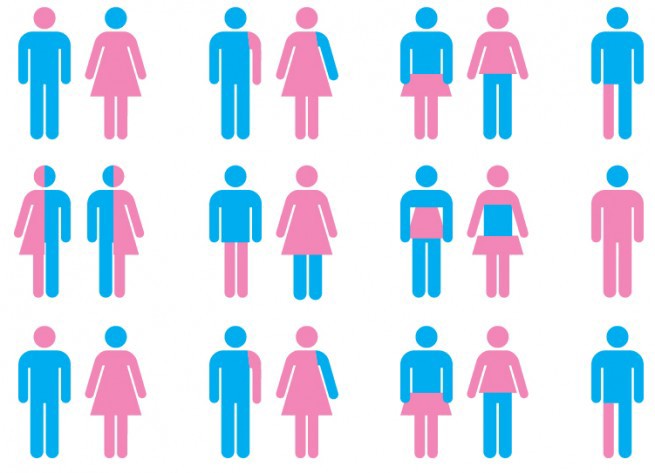Kaitlyn Sandvik, Editor-in-Chief
@ksandvikcourant

The term “gender binary” has entered mainstream discussion more recently in response to increased national dialogue on transgender issues. Popular icons such as Caitlyn Jenner and Laverne Cox have joined the discussion and opened up about their struggle. Jenner discussed the discomfort she felt in her body throughout her youth and adulthood with reporter Diane Sawyer. Cox inspired transgender youth to feel beautiful and empowered despite circumstances that might make daily life a battle.
In unfortunate incidents, violence against the transgender community or individuals have contributed to increased attention on the subject. In Caitlyn Jenner’s acceptance speech of the Arthur Ashe Courage Award at the Excellence in Sports Performance Yearly program (ESPYs), she cited that 41% of transgender people have attempted suicide and urged people to accept that differences exist and that all people deserve equal respect.
According to the National Coalition of Anti-Violence Programs (NCAVP), the majority of hate crimes in 2013 were against transgender women, at a staggering 72%. Transgender women of color are at an especially high risk as the NCAVP reports that 67% of the victims of homicide in 2013 were transgender women of color. 2015 has already seen 20 murders of transgender women.
In response to this elevated attention that challenges that transgender people confront across the country is receiving, some high schools are re-evaluating how they protect and help students in a learning environment.
In October of 2011, Public Act 11-55 was brought into effect under Connecticut state law. The act repeatedly noted the importance of school officials complying with pronouns a student self-identifies with. In guidelines from the Connecticut Safe School Coalition, it is stated that, “The act requires public schools to be open to all children and to give them an equal opportunity to participate in school activities, programs, and courses of study without discrimination on account of gender identity or expression.”
In order to comply with these expectations and to supply students with a nurturing and fair educational experience with the Courant, the methods we use to report need to adapt to the needs of the students we engage with. The guidelines put out by the Connecticut Safe School Coalition also noted, “These youth, because of widespread misunderstanding and lack of knowledge about their lives, are at higher risk for peer ostracism, victimization, and bullying in the school environment, in addition to the psychological harm they may suffer in an environment that rejects them for their gender identity.”
It is a matter of providing all students, no matter the details of their gender identity with the opportunity to be cited in Courant stories with the correct pronoun. It is a matter of being aware and acting with this awareness of Connecticut state law so that every student can feel comfortable in their school. It is a matter of each member of the Courant staff being a journalist and therefore being ceaselessly dedicated to reporting stories that are fair and equal, always.
It always has been and always will be the ultimate goal of the Courant, to comply with excellent journalistic standards and therefore to consistently ensure absolute fairness to all sources, no matter their gender identity. The decision to eliminate our use of “Mrs.” and universally use “Ms.” was made on the basis that the marital status of a female source has no relation to the validity of her words and input. To maintain equality, just as a male is “Mr.”, a female is “Ms.”.
This year the Courant considered adopting an approach that would eliminate the use of pronouns that indicate gender (he, she, his, her) and to replace them with the gender neutral alternative (their). Upon implementing this, it became clear in the editing process that this change made stories difficult to read and often confusing. We decided to adjust our plan and realized that asking for preferred pronouns would be the best solution for ensuring that each source is attributed correctly in relation to their self-identification. The staff has started this process of ensuring pronoun equity for all sources but will continue to strive to achieve this throughout the year.




